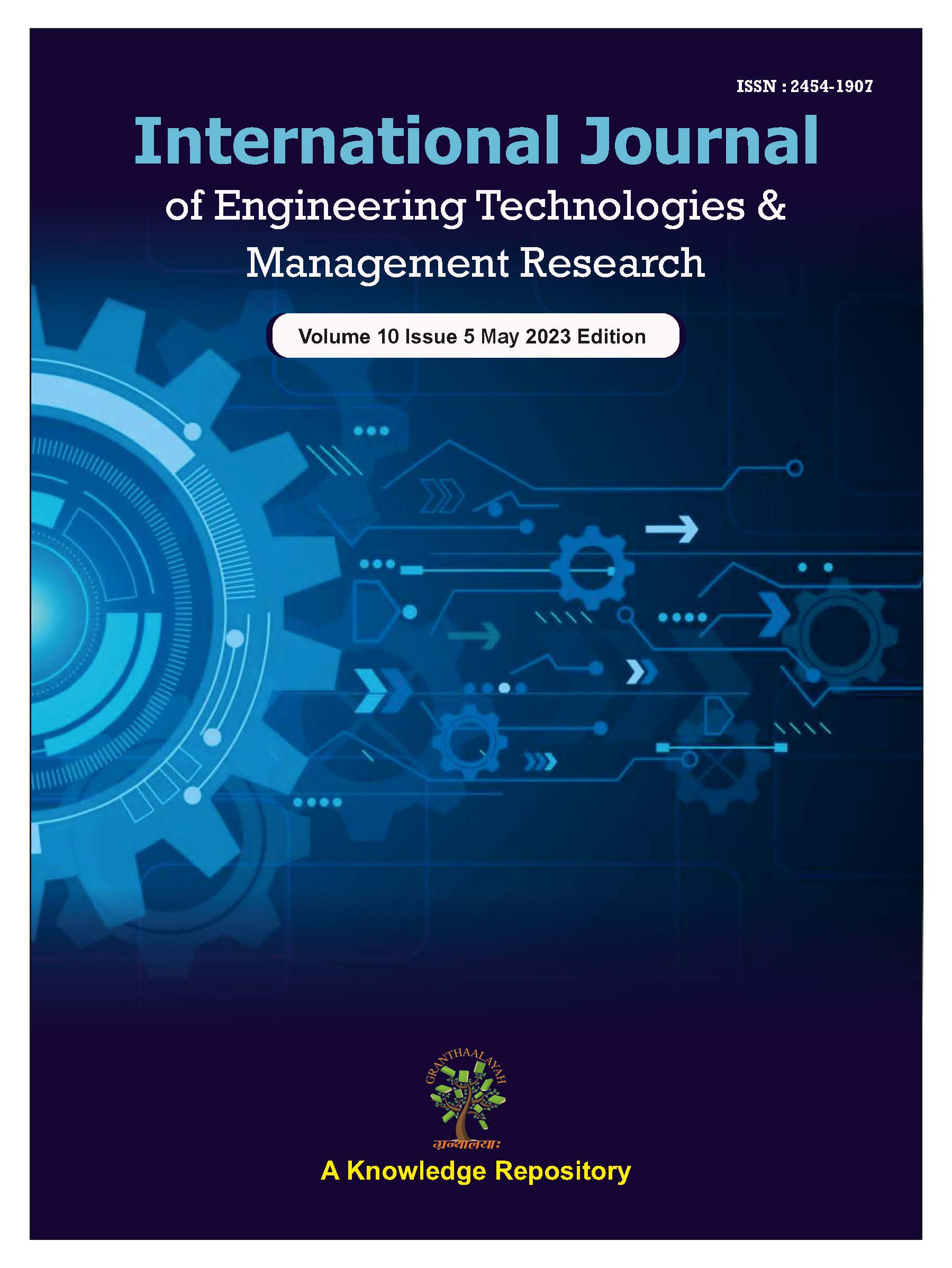TEACHING REFORM OF ELDERLY INFORMATION TECHNOLOGY CURRICULUM BASED ON CDIO
DOI:
https://doi.org/10.29121/ijetmr.v10.i5.2023.1320Keywords:
CDIO, Elderly Education, Information Courses, Reform In EducationAbstract
Elderly education is beneficial for achieving the continued socialization of the elderly, enabling them to adapt more smoothly to retirement life and new social roles. This article focuses on the elderly education information curriculum and proposes to reform traditional curriculum teaching methods based on CDIO theory, following the ideas of Concept, Design, Implementation, and Operate, so that students can master new technologies and skills, build a learning society, and improve the cultural quality of the entire nation.
Downloads
References
Bankel, J., Berggren, K. F., Engstrom, M. et al. (2005). Benchmarking Engineering Curricula with the CDIO Syllabus, International Journal of Engineering Education, 21(1), 121-133. http://www.webmail.orbiter.cdio.org/files/document/file/benchmarking.pdf
Berggren, K., Brodeur, D., Crawley, E. F. et al. (2003). CDIO: An International Initiative for Reforming Engineering Education, World Transactions on Engineering and Technology Education, 2(1). http://wvvw.cdio.org/files/document/file/cdio_international.pdf
Bing, X., & Sun, H. (2009). Construction and Practice of T-CDIO Course System, Research in Higher Education of Engineering.
Chunxia, Y. (2015). The Reform Research and Practice of Quality Course of "Automatic Control Theory" Based on CDIO Educational Philosophy. https://www.atlantis-press.com/proceedings/cetcu-15/25846834
Crawley, E. F. (2002). Creating the CDIO Syllabus, A Universal Template for Engineering Education, Frontiers in Education, FIE. (2002), 32nd Annual, IEEE Publications. https://ieeexplore.ieee.org/abstract/document/1158202/
Crawley, E. F., Malmqvist, J., Lucas, W. A. et al. (2011). The CDIO Syllabus V2. 0 an Updated Statement of Goals for Engineering Education, Proceedings of the 7th International CDIO Conference, Copenhagen, Denmark. http://staging.cdio.org/files/document/file/crawleyetalcdiosyllabus2.0paper_29may2013_0.pdf
Gu, P., Shen, M., Li, S. et al. (2008). From CDIO to EIP-CDIO: A Probe into the Mode of Talent Cultivation in Shantou University, Research in Higher Education of Engineering, 45(5), 1318-1326.
Johan, B., & KARL-FREDRIK,等. (2005). Benchmarking Engineering Curricula with The CDIO Syllabus, International Journal of Engineering Education.
Junpeng, S., Xiulin, S., & Si, C. (2012). Academic Management Of Excellent Engineer Training Program for Specialty of Mechanical Design and Manufacture Based on CDIO Model//National Conference for Engineering Sciences. https://ieeexplore.ieee.org/iel7/6526529/6543347/06543691.pdf
Junpeng, S., Xiulin, S., & Si, C. (2013). Academic Management of Excellent Engineer Training Program For Specialty of Mechanical Design and Manufacture Based on CDIO Model[C]// Conference on Education Technology and Management Science. https://www.atlantis-press.com/proceedings/icetms-13/7206
Liang, Z., & Yinru, L. (2012). Designing and Building of Training Model and Platform for Service Outsourcing Talents Based on CDIO//National Conference for Engineering Sciences. https://ieeexplore.ieee.org/iel7/6526529/6543347/06543580.pdf
Peng, L., Wang, Y., Xiong, G. et al. (2006). Adoption of CDIO Elements in the Final Year Civil Engineering Design Project, 5(2). http://www.wiete.com.au/journals/WTE&TE/Pages/Vol.5,%20No.2%20(2006)/10_Lin8.pdf
Sun, Y. (2013). Teaching Reform of Web Project Development Courses Based on CDIO//Conference on Education Technology and Information Systems. https://doi.org/10.2991/icetis-13.2013.247
Tao, W. (2010). The Exploration and Practice of Integrated Talents Nurturing Model Based on TOPCARES-CDIO. Computers and Education. http://www.cdio.org/knowledge-library/documents/enhancing-students-capabilities-through-international-engineering
Villegas, G. U. (2011). Bibliographic Review: Rethinking Engineering Education. The CDIO Approach. Sistemas y Telemática, 9(16), 91. https://doi.org/10.18046/syt.v9i16.1031
Wang, S. W. (2009). Hong CW. CDIO: The Classic Mode of Engineering Education in MIT--An Unscrambling on the CDIO Syllabus. Journal of Higher Education in Science & Technology. https://doi.org/10.1108/03056120911002415
Wang, Y., Ming, W., Huang, J. et al. (2008). CDIO in Practice in Cornerstone Project for Civil Engineering Program. http://www.cdio.org/files/document/file/S6_Wang_CDIO%20in%20practice.pdf
Young P Y, Malmqvist J , S Hallström, et al. (2005). Design and Development of CDIO Student Workspaces - Lessons Learned[J]. Naval Systems, Conference on Education and Teaching in Colleges and Universities, 2867-2880. https://doi.org/10.18260/1-2--14623
Zha, J. (2008). On CDIO Model Under "Learning by Doing" Strategy. Research in Higher Education of Engineering.
Zhu, X., Hu, J., Hui, Z. et al. (2012). Research on Micro-Project Driven Teaching Method with CDIO Engineering Educational Pattern. Experimental Technology and Management. https://www.atlantis-press.com/article/125919707.pdf
Zuo, Y. Z. (2010). On the Innovative Design-Oriented CDIO engineering Education Model. Journal of Dongguan University of Technology.
Published
How to Cite
Issue
Section
License
Copyright (c) 2023 Haibo Yi, Ruinan Chi

This work is licensed under a Creative Commons Attribution 4.0 International License.
License and Copyright Agreement
In submitting the manuscript to the journal, the authors certify that:
- They are authorized by their co-authors to enter into these arrangements.
- The work described has not been formally published before, except in the form of an abstract or as part of a published lecture, review, thesis, or overlay journal.
- That it is not under consideration for publication elsewhere.
- That its release has been approved by all the author(s) and by the responsible authorities – tacitly or explicitly – of the institutes where the work has been carried out.
- They secure the right to reproduce any material that has already been published or copyrighted elsewhere.
- They agree to the following license and copyright agreement.
Copyright
Authors who publish with International Journal of Engineering Technologies and Management Research agree to the following terms:
- Authors retain copyright and grant the journal right of first publication with the work simultaneously licensed under a Creative Commons Attribution License (CC BY-SA 4.0) that allows others to share the work with an acknowledgment of the work's authorship and initial publication in this journal.
- Authors can enter into separate, additional contractual arrangements for the non-exclusive distribution of the journal's published version of the work (e.g., post it to an institutional repository or edit it in a book), with an acknowledgment of its initial publication in this journal.
- Authors are permitted and encouraged to post their work online (e.g., in institutional repositories or on their website) before and during the submission process, as it can lead to productive exchanges, as well as earlier and greater citation of published work.
For More info, please visit CopyRight Section





















